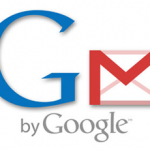
Recently Adam, operating the Google web-based email service, Gmail, said in a blog post that because of the Google’s diverse policy of integrating the latest technologies in their services, Google is planning to render many upcoming features of Gmail in the HTML5 standard. According to the statement given by the Adam, Google has a lot of things in its portfolio and the company can do things with a higher efficient rate using HTML5.

“We have things that we can do much more efficiently in HTML5,” said De Boor, speaking last Thursday at the Usenix WebApps ’10 in Boston.
“HTML5 is exciting to me insofar as to how many browser makers are adopting it,” he said, adding, “I have high hopes for IE9.”
The more the browser makers will adopt this new platform, more it will be attractive to the firms. Dragging and dropping files from the desktop into the browser will be just one new feature in Gmail’s new standards-based update.
Early tests rounds of HTML5 have appeared to be promising. For instance, Gmail web service basically searches for those browsers that can function with version 3 of the Cascading Style Sheets (CSS), a standard closely related to HTML5.
Furthermore, the specialists at the company have found out that with CSS standard the rendering time increases substantially. For example, If the browser supports CSS3, Gmail will deliver the pages using these specifications, rather than its traditional approach of using the Document Object Model (DOM).
One of the major benefits De Boor indicated to is how the standard could speed the loading and execution time of Gmail. Google’s current goal is to get Gmail to load in under a second. “Speed is a feature,” he said.
De Boor also explained about adding new features that could not be rendered using HTML5.
One will be the proficiency to drag files from the browser window onto the desktop. To do this, his team is working on a new data transfer protocol, called “downloadurl.”
“We tested out to get this in HTML5,” but were unable to do so. He jestingly said that Google will have to lobby to have some of the functionality needed to make that happen added into HTML6, which, as of today, does not exist in any form.
Google will also leverage HTML5’s database standards (migrating away from the now-dead Google Gears storage; in favor of HTML5 Web Workers).
Presently, the Gmail program is comprised of 443,000 lines of JavaScript, with 978,000 lines if comments are included. All of it was written by hand, he said.
During the question-and-answer session, De Boor was asked if he was comfortable using JavaScript for such a large project.
He acknowledge that another language, such as Java itself, might be more optimized, but he also noted that Java is a lot more verbose as well. “At this point to me it is a matter of choice which language you use,” he said. He defended JavaScript’s performance, though.
“Most of the irritation around JavaScript comes from how it is implemented in browsers,” he said.


